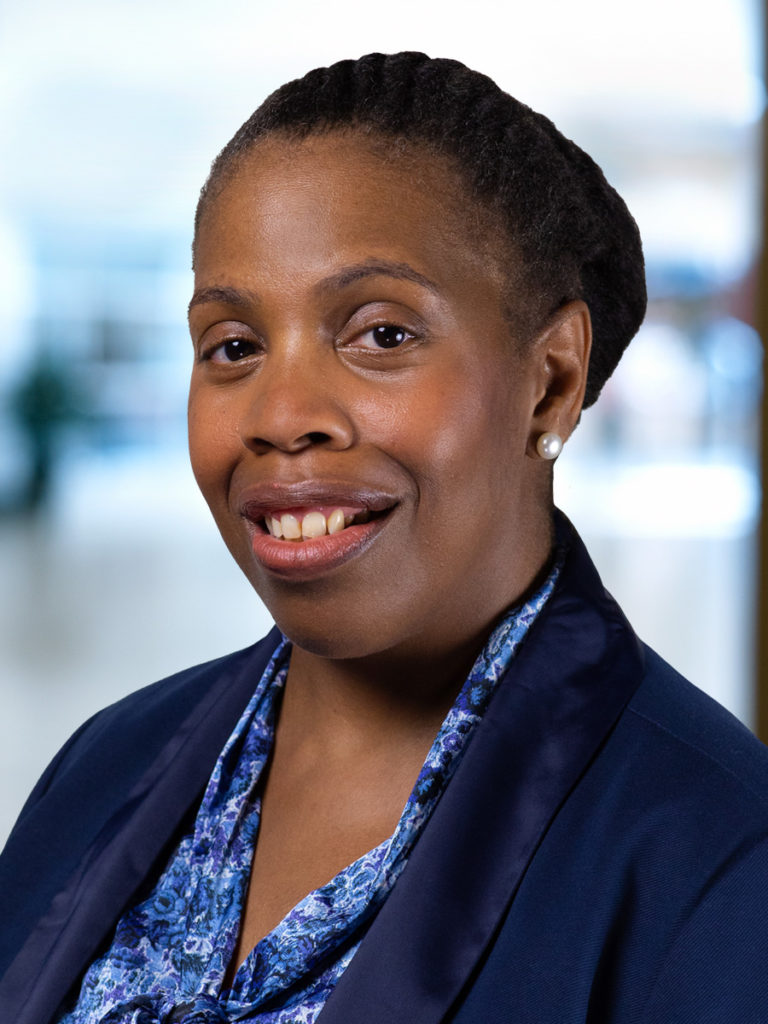Tell us a little about your early life/education?
I earned an undergraduate degree in Communications/Journalism and Spanish from University of Wisconsin-Eau Claire. I then earned an M.A. in Mass Communication from the University of Wisconsin-Milwaukee. During my time at school, I was a campus tour guide, Black Student Association president, a tutor, and more. I learned many of the soft skills that I would later apply at work, including balancing many personalities, taking ownership of my time and meeting deadlines.
How did you end up at Baird in the communications department?
I landed at Baird through a program called INROADS, an organization that matches youth from diverse backgrounds with corporate internships. The program required a certain GPA and involvement in leadership roles, and fortunately Baird was one of the sponsoring companies. I began at Baird in a marketing role and moved into a PR role a year later when Baird created an in-house PR department.
Were there any formative experiences you had that helped accelerate your knowledge?
I was the youngest person in the room for a long time, but that gave me an opportunity to help Baird communicate more clearly. I could approach people and say, “this doesn’t make sense to me, can we make it clearer?” I could also give an outsider’s perspective. Our business uses a lot of jargon and acronyms, and one of my contributions has been to try to weed that out.
In addition, early in my career, our then CEO Paul Purcell led the purchase of Baird stock from Northwestern Mutual so we could become employee owned. This was a huge deal because it allowed an alignment of interests and has become a central component of our brand messaging. Working with Paul was formative.
What advice do you give to early career communicators?
Just say “yes.”
Early in my tenure, I was asked to write comments for our Chairman, Fred Kasten, for an event on short notice. Even though our short-staffed team was overwhelmed, I realized it was a great opportunity. That work led to my connecting directly with Paul Purcell, a relationship that lasted for the next 10 years! Paul became my advocate, which led to other opportunities I might never have had if I hadn’t said yes.
I always encourage young people to share lots of ideas and not to be afraid to challenge old ways of thinking or to revisit old processes. Always evaluate what you are doing, and make sure it is reflective of where you want to go.
And always take notes. There’s lots to learn!
Gaining recognition as a “best place to work” has been a part of Baird’s communications strategy for many years. Can you comment on how this positioning has been part of your communications strategy?
Baird has been on the Fortune 100 Best Companies to Work For List for 19 consecutive years! Just as important for talent acquisition is the fact that our strategy is really about creating a service model that is best for clients. It helps employees stay a long time and build long-term relationships.
One repeated theme of these stories has been Baird’s “no asshole rule.” We’ve repeatedly emphasized the fact that we won’t support anyone putting their own interests ahead of the interest of clients or the firm.
Baird has done a lot of work to try to accelerate both women and people of color. Can you talk about what you have learned?
What I’ve learned is that nobody has all the answers on how to fix the issue of building a diverse pipeline. Baird has tried multiple strategies. We try to “walk the talk,” look at the data honestly and not be afraid of what it is telling us. We’ve implemented diverse hiring panels to help evaluate candidates. We also provide training at all levels.
You work with different PR firms to support Baird’s varying businesses. How do you keep them engaged and coordinated?
As a firm, we care a lot about our partnerships and their cultures—how they look at the world and how they understand the business. They have to trust and know us. It’s all about the long-term relationship combined with expertise. We want them to feel that Baird is important to their firm.
What’s your daily routine?
First thing, I read the news headlines from the New York Times, The Skimm and The Wall Street Journal. Breakfast is oatmeal and tea. After coming into work, I “walk and talk” with my colleague Colin to check in and get prepped for the day. I block out both 8-9 a.m. and the lunch hour (12-1 p.m.) and use the time to either plan/catch up or just take a break. I have the flexibility to work from home when my husband, who works in guest services at the Wisconsin Center, has an early program. Critical for us has been having a great babysitter!
You were recently named leader of Corporate Communications. What’s ahead for you?
I’m very excited & honored about the new role. I get to work with so many individuals who knock it out of the park each day. I’ve been at Baird for so long and have had so much experience with all different parts of the business. I’m always working to shift my leadership approach and show up differently to work effectively with so many different partners. I’ve sought training and am always working to grow my leadership skills.
Any podcast or TV recommendations?
- Golden Girls
- The Skimm’s 9 to 5 or Skimmed from the Top
- Any Oprah podcast, particularly the David Brooks episode
- The Daily podcast
- TEDx Talks
- LIFE Kit from NPR
- Glennon Doyle
- Professional Troublemaker- (Luvvie Ajayi Jones)
- Michelle Obama’s podcast
- Barack Obama & Bruce Springsteen
- Presidents Are People Too
- Built America series on The History Channel
This interview is one in an occasional series of profiles of financial communications professionals. Our previous interview can be found here.
